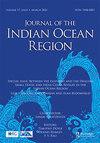Indo-Pacific reluctance and the gulf: an examination of maritime domain awareness as an influence shaping regional maritime security efforts
IF 0.9
Q2 AREA STUDIES
引用次数: 1
Abstract
ABSTRACTMaritime security, while a challenge for littoral states in the Gulf region, has not evolved to reflect global maritime trends. The maritime challenges in the Gulf region point out the necessity of reforming approaches to maritime security and investing in a greater understanding of how the global commons will define the health of individual Gulf states. This paper examines how Gulf states, despite enjoying modern maritime forces, remain fixated on traditional mechanisms for addressing maritime threats. Using a Maritime Domain Awareness framework for analysis, this paper argues that Gulf states lag in information sharing processes tied to maritime security operations that have become a common approach in the Indo-Pacific. Without greater investment by Gulf maritime services into the information sharing arrangements, the Gulf becomes more vulnerable.KEYWORDS: Gulf cooperation councilIndo-PacificMaritime domain awarenessInformation sharing mechanisms Disclosure statementNo potential conflict of interest was reported by the author(s).Notes1 The Indo-Pacific Strategy of the United States differs from other Indo Pacific concepts in its geographic scope. The United States concept sees the Indo Pacific as ending at the boundary of United States Indo-Pacific Command, or the border between India and Pakistan. However, within the United States bureaucracy this boundary expands in relation to specific security and diplomatic efforts. The Indo-Pacific, as the United States interprets it, overarchingly is about the states of the Western Pacific.2 Combined Maritime Forces is one of the most successful cooperatve naval organizations in the contemporary age. Its task forces provide a constant naval presence in regional waters and helped to eliminate the danger from Somalia-based pirates. It serves as a constant training and consultation institution that in turn helps to advance naval interoperability. The lack of attention on this institution speaks to the persistence of sea blindness in the Gulf.Additional informationNotes on contributorsJeffrey PayneJeffrey Payne currently serves as an Assistant Professor at the Near East South Asia (NESA) Center for Strategic Studies. He pilots NESA’s maritime security programming, including its ongoing series devoted to the Indian Ocean Region and wider Indo-Pacific. In addition, he leads NESA’s engagements relating to maritime and littoral information sharing/data analysis.印度-太平洋地区的不情愿和海湾:海洋领域意识作为一种影响区域海上安全努力的考察
摘要海上安全虽然是海湾地区沿海国家面临的挑战,但尚未演变为反映全球海洋趋势。海湾地区的海上挑战指出,有必要改革海上安全措施,并投资于更好地理解全球公域将如何定义海湾各国的健康。本文考察了尽管拥有现代海上力量,海湾国家如何仍然专注于解决海上威胁的传统机制。本文使用海洋领域意识框架进行分析,认为海湾国家在与海上安全行动相关的信息共享过程中滞后,而海上安全行动已成为印度太平洋地区的一种常见方法。如果海湾地区海事服务部门不加大对信息共享安排的投资,海湾地区将变得更加脆弱。关键词:海湾合作委员会印度洋-太平洋海域感知信息共享机制披露声明作者未报告潜在利益冲突。注1美国的印太战略在地理范围上不同于其他印太概念。在美国的概念中,印度太平洋以美国印度太平洋司令部的边界或印度和巴基斯坦的边界为终点。然而,在美国官僚机构内部,这一界限在涉及具体的安全和外交努力时扩大了。按照美国的解释,印太总体上是关于西太平洋各国的。2海上联合部队是当代最成功的海军合作组织之一。它的特遣部队在该地区水域提供持续的海军存在,并帮助消除来自索马里海盗的危险。它作为一个持续的培训和咨询机构,反过来有助于提高海军的互操作性。对这一机构缺乏关注,说明了海湾地区对海洋的盲目性持续存在。附加信息撰稿人说明杰弗里·佩恩杰弗里·佩恩目前是近东南亚战略研究中心的助理教授。他是NESA海上安全项目的负责人,包括正在进行的印度洋地区和更广泛的印太地区系列节目。此外,他还领导NESA有关海事和沿海信息共享/数据分析的工作。
本文章由计算机程序翻译,如有差异,请以英文原文为准。
求助全文
约1分钟内获得全文
求助全文

 求助内容:
求助内容: 应助结果提醒方式:
应助结果提醒方式:


